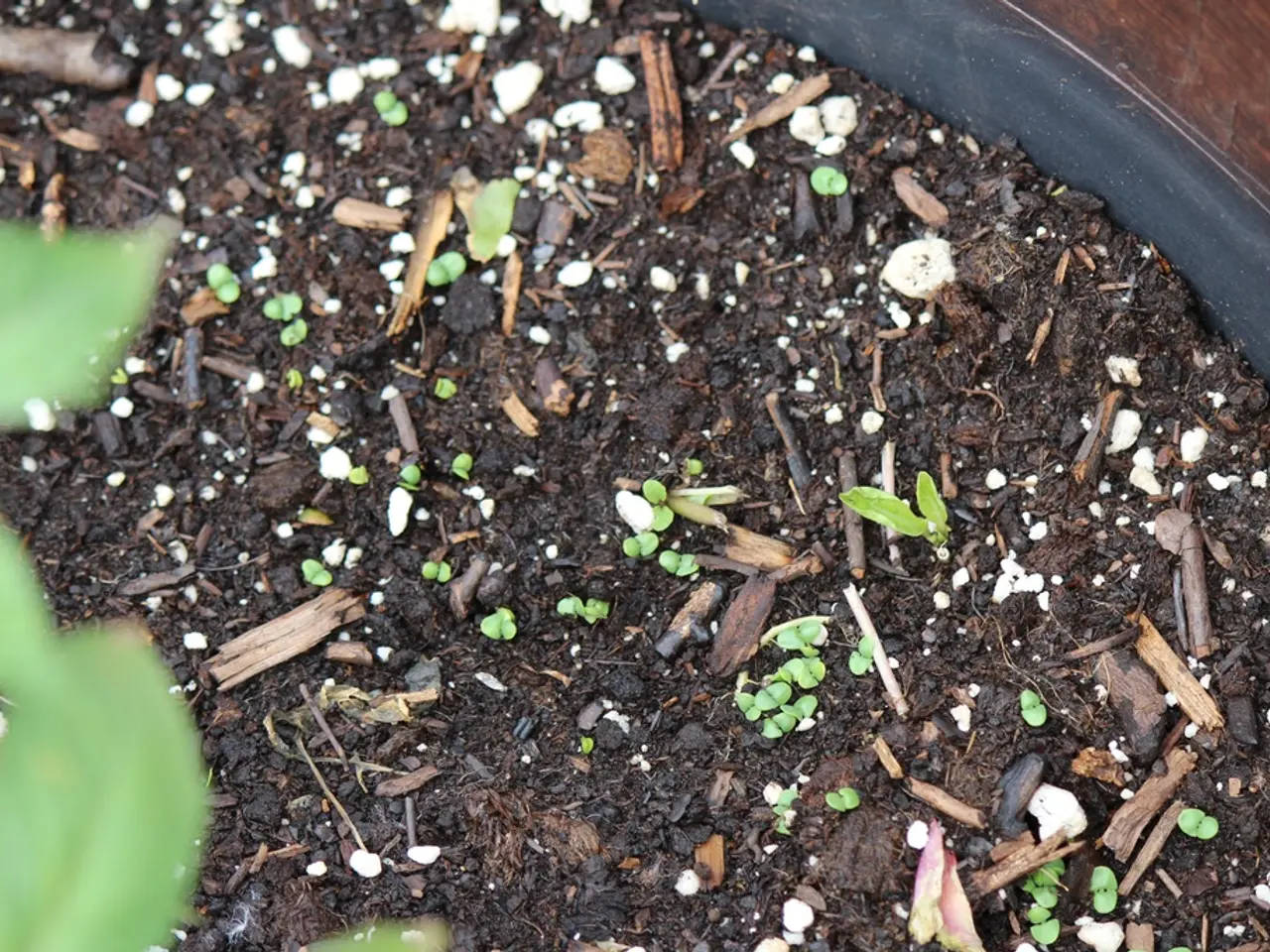Enhancing Heavy Soil Composition: Flora to Disintegrate Sticky Ground Matter
Improving the structure, tilth, and overall health of clay soil is essential for successful plant growth. Here are some effective methods to achieve this:
Adding organic matter to clay soil can work wonders. Compost, biochar, perlite, commercial soil conditioners, or soil builder mulches like compost, bark, grass clippings, and manure are all suitable options. These amendments help break up compacted clay particles, enhance aeration, drainage, and nutrient availability, and promote beneficial microbial activity.
Incorporating well-decomposed compost or organic matter into the top 6-12 inches of soil creates small soil aggregates that improve drainage and root penetration. Cover crops, such as crimson clover, winter rye, buckwheat, and others with deep taproots or fibrous root systems, naturally aerate clay soils and add organic matter when turned in before they set seed.
Coconut coir or fiber amendments can lighten dense clay soil, improving tilth and drainage without relying on peat moss, which is less sustainable. Bark also aids in aerating clay soil, creating air pockets for water drainage and oxygen for plant roots.
When working with clay soil, it's crucial to avoid compaction or dust formation. Soil should not be worked when it is too wet or too dry.
For those who prefer growing plants in containers or raised beds, these can be an alternative for plants that thrive in lighter soils. Raised beds can help control soil conditions for clay soil, making it easier to grow plants that prefer lighter soils.
Adding worms to clay soil can accelerate the decomposition of organic matter, further improving the soil structure. Manure adds organic matter to clay soil, improving drainage and aeration while providing essential nutrients.
In practice, when planting trees or garden beds, mix about one-third organic amendment with two-thirds existing soil. For existing beds, surface applications of organic matter followed by natural incorporation via rainfall or light cultivation also work well but more gradually.
In summary, the most effective approach combines the use of organic soil amendments, cover cropping, and mindful soil moisture management to significantly enhance clay soil conditions for healthier plant growth.
[1] Soil Amendment Guide for Improving Clay Soil. (n.d.). Retrieved from https://www.gardeningknowhow.com/garden-how/soil-fertilizers/clay-soil-amendments.htm
[2] How to Improve Clay Soil for Better Gardening. (n.d.). Retrieved from https://www.bhg.com/gardening/soil/improving-soil/clay-soil-improvement/
[3] How to Improve Clay Soil for Vegetable Gardening. (n.d.). Retrieved from https://www.almanac.com/gardening/vegetable-gardening/improving-clay-soil
[4] How to Improve Clay Soil for Flower Gardens. (n.d.). Retrieved from https://www.almanac.com/gardening/flower-gardening/improving-clay-soil
- To enhance a home-and-garden lifestyle, consider adding organic matter such as compost or manure to clay soil, which can improve its structure, drainage, and nutrient availability, thereby promoting healthier plant growth.
- For those with a preference for container or raised-bed gardening, these options can provide an alternative for plants thriving in lighter soils, while also offering better control of soil conditions for clay soil types.




